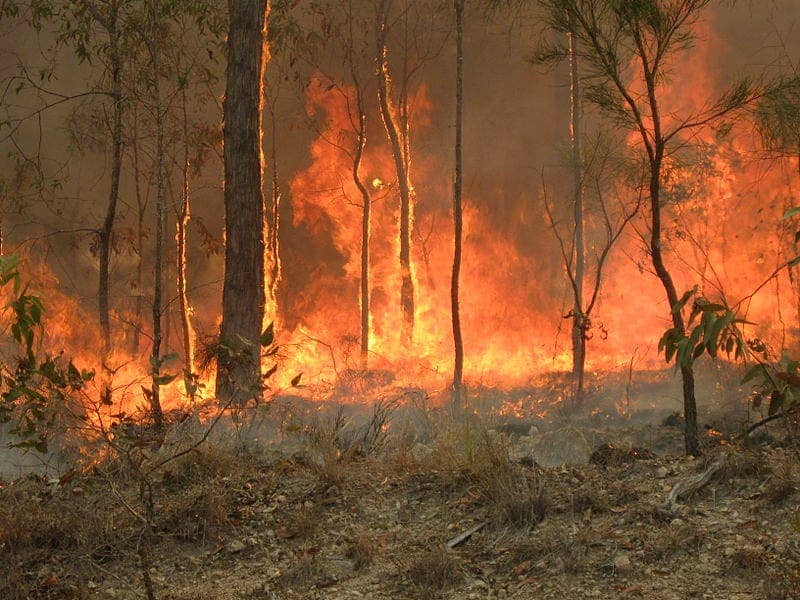This week, Australia has experienced its hottest day on record. Authorities expect the current heatwave to worsen, however, and further feed the bushfire season — which is already unprecedented as well.

With a nationwide average temperature of 40.9 degrees Celsius (105.6 degrees Fahrenheit), this Tuesday set a new record for the land down under. The previous record of 40.3 degrees Celsius was recorded in January 2013.
The heat is on
This year, Australia’s summer bushfire season has experienced a very early and intense start. Hundreds of fires have been roaring across the nation for months now, including a “mega-blaze” north of Sydney, the country’s largest city. Smoke from this blaze has led to increased levels of air pollution in Sydney, prompting authorities to declare the event a public health emergency.
All in all, over three million hectares (7.4 million acres) of land has been burned across Australia so far. Six people have lost their lives to the blaze, and about 700 homes have been destroyed.
Global warming is likely fanning the flames higher and earlier than usual. Australia has also experienced a prolonged drought, leaving a lot of dry plant matter in the bush, and leaving several towns out of water. The fires have sparked climate protests targeting the conservative government, which has resisted calls to address the root causes of global warming — in favor of the country’s lucrative coal export industry.
The heatwave started in the country’s western reaches, where firefighters were engaging thousands of bushfires earlier this week. It has since crept across central Australia and is spreading to the heavily populated eastern states. Weather forecasts for parts of New South Wales, of which Sydney is the capital estimate temperatures in the mid-40s Celsius (around 110 Fahrenheit) for the end of the week. On Saturday parts of Sydney are expected to reach over 46 degrees celsius (115 Fahrenheit).
Most bushfires so far have been recorded in Australia’s eastern states. Turbulent winds of up to 100 kilometres (60 miles) an hour are expected in the area later this week, which may further stoke the fires. Embers from the fires can travel up to 30 kilometers (around 18.5 miles) by strong winds, authorities explained, which further increases the risks during this time.
“Over the next few days we are going to see firefighters, the emergency services and all those communities close to fires […] challenged with a new threat,” New South Wales fire commissioner Shane Fitzsimmons said on Wednesday.
On Wednesday, police officers evacuated residents from dozens of homes in the Peregian area (northeastern Queensland) as out-of-control bushfires threatened the properties.
“Fire crews and waterbombing aircraft are working to contain the fire but firefighters may not be able to protect every property,” Queensland Fire and Emergency services said. “You should not expect a firefighter at your door. Queensland Police Service are door knocking in the area. Power, water, and mobile phone service may be lost.”
While Prime Minister Scott Morrison is on holiday at an undisclosed, overseas location, climate protesters plan to march in Sydney this week to demand change and highlight his absence as vast stretches of Australia burn. Recently, Mr. Morrison has acknowledged climate change as one of “many other factors” driving the bushfires.









